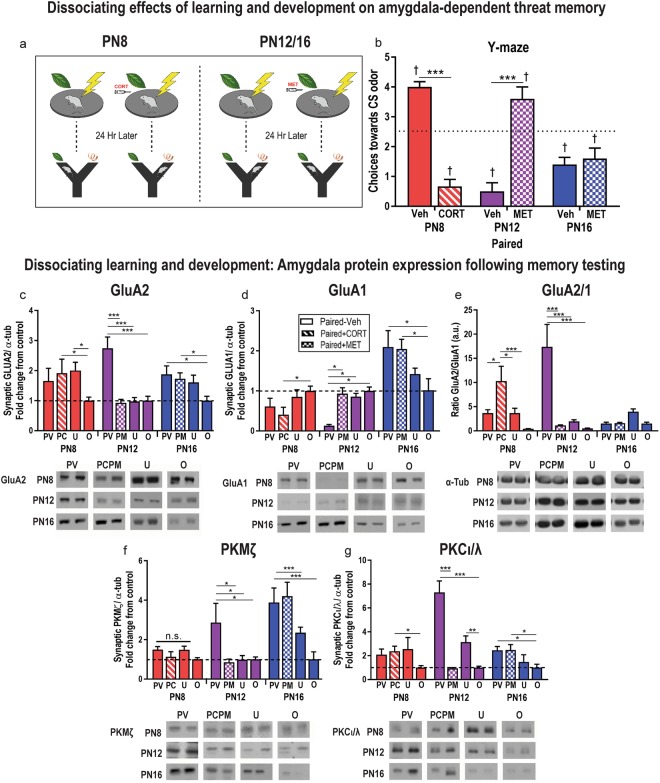Figure 3.
Dissociating effects of learning and development on amygdala-dependent threat memory. PN12 and PN16 pups were injected i.p. with CORT blocker (metyrapone, MET) or vehicle solution and PN8 pups were injected with CORT or vehicle before training and tested for long-term memory retention in the Y-maze 24 hr later (a). MET prevented long-term threat memory consolidation as assessed in the Y-maze at PN12, but not PN16, while CORT administration produced an avoidance in PN8 pups (b). MET delivered i.p. prevented learning at PN12, but not PN16, and prevented GluA1/2 changes observed in PN12 vehicle-injected controls. CORT administration in PN8 pups before conditioning produced avoidance of the CS 24 hr later and changes in GluA1/2 observed in PN12 pups given vehicle injections (c,d). GluA2/1 ratio was increased 24 hr after conditioning in PN8 pups that received CORT and PN12 pups that received vehicle injections (e). MET injections at PN12 prevented threat learning and prevented memory-associated increases in PKMζ, but memory-associated increases were preserved in PN16 pups conditioned with MET and vehicle. Threat-induced learning via CORT in PN8 pups failed to increase PKMζ (f). PKCι/λ expression was increased in pups that showed avoidance memory in the Y maze (PN8 PC, PN12 PV, PN16 PV/PM) (g). *P < 0.05, **p < 0.01, ***p < 0.001; † denotes significant difference from chance performance on Y-maze (dotted line), p < 0.05. Error bars indicate mean ± SEM. PV/PM/PC/U/O: paired + vehicle, paired + metyrapone, paired + CORT, unpaired, odor only. Dashed line: average protein expression in untrained “odor only” group (control). Blots for each condition show two adjacent lanes. The same tubulin-corrected values were used for all markers probed. Comparisons were made across gels processed in parallel using samples derived from the same experiment. Full-length blots/gels are presented in Supplementary Figures 1–5.

